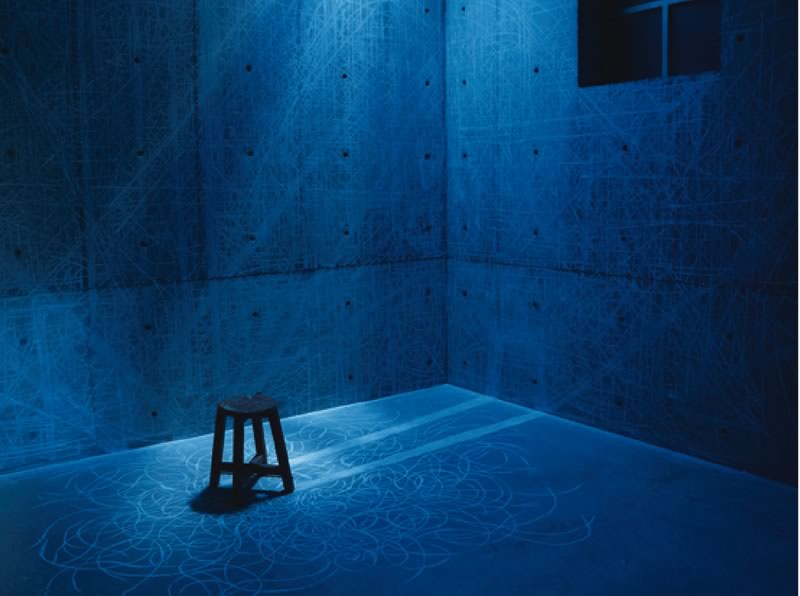
J:Filmmakers in Focus 1: ISHIDA Takashi
8works67min

CHAIR ISHIDA Takashi
A collection of works by Ishida Takashi, an artist who has been active in various fields such as film and contemporary art since winning the Special Prize at the 1999 Image Forum Festival. His first major solo exhibition, 「BILLOWING LIGHT : ISHIDA TAKASHI」is being held at the Yokohama Museum of Art (March 28th to May 31st). These two programs include eight works selected by the artist himself, and he will be there to discuss these films created on the basis of his own distinctive style.
EMAKI 1995 / 8mm ( digital screening ) / color / 5min.
EMAKI 2 1996 / 8mm ( digital screening ) / color / 4min.
GESTALT 1999 / 16mm / color / 7min.
THE ART OF FUGUE 2001 / 16mm / color / 19min.
CHAIR / SCREEN 2002 / digital / color / 8min.
EMA / EMAKI 2 2006 / 16mm / color / 7min.
FILM OF THE SEA 2007 / digital / color / 12min.
BURNING CHAIR 2013 / digital / color / 5min.
ISHIDA Takashi
Artist/Filmmaker. Born in Tokyo in 1972. Began painting seriously in 1990 and creating moving image works in 1992. GESTALT was a special selection at the 1999 Image Forum Festival. Has since received attention for pieces such as Aichi Arts Center original moving image work ART OF FUGUE (01) and Yokohama Art Museum residency work WALL OF THE SEA (07). Won the Goto Memorial Cultural Award New Artist Prize in 2007. Associate professor at Tama Art University.
ISHIDA Takashi’s formative frames NISHIMURA Tomohiro (film critic)
This program was put together to interlock with Ishida Takashi’s “Billowing light” exhibition being held at the Yokohama Museum of Art. At this museum Ishida’s moving image works are mainly displayed as installations, but his early works were originally films created on the assumption they would be presented in a place like a movie theater.
An artist who moved from still to moving images, Ishida creates stop-motion works using organic line drawings. The first of these works, Emaki, is filmed at the unit of one frame while lines are drawn on a long roll of paper. These drawings were originally still images, but through his animation technique he breathes life into their lines. This temporal development is tied to music that is a work of the same duration. The art of fugue (2001) is a work in which the movement of abstract pictures is synced to a piece of music by Bach.
Along with organic lines, images of geometrical rectangles also appear in The Art of Fugue. These rectangles are presumably both picture frames and at the same time also cinema screens. Alberti, who developed the theory of perspective, referred to paintings as “open windows”, but the frame of a picture or a movie can cause three-dimensional (perspectival) images to appear within its two-dimensional plane.
Gestalt is a work in which drawings are made on the walls of a room with a window, and this window is also an analogy of the screen as a frame. On the walls are drawn not only organic lines but also images of three-dimensional space, creating an awareness of perspective. In Chair and screen, a work in the same vein as Gestalt, lines are drawn on the walls of a room in which a round chair has been placed, and the chair itself and moving images of the chair are overlaid. Along with the existence of the screen itself, in this work our attention is also drawn to the correspondence relationship between an actual object and the image of that actual object projected on the screen.
Ishida’s works are born in the place where still pictures meet moving images. The lines he draws emerge as living things that endlessly repeat their creation. At the same time he also makes the “frame” – the premise that establishes the existence of pictures and movies – itself his subject, and creates expression anew from the place where images are born.
Schedule
TOKYO Image forum:4/28 21:15 Program JTOKYO Park tower:4/29 13:45 Program J
KYOTO:5/17 16:45 Program J
FUKUOKA:6/3 18:40 Program J
NAGOYA:6/27 13:10 Program J








